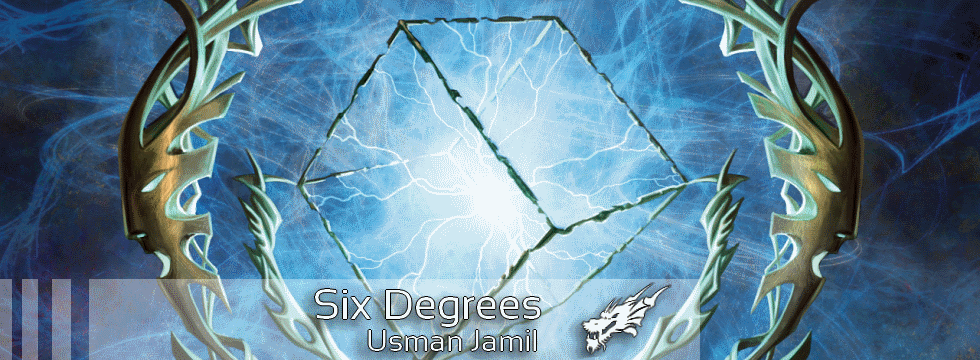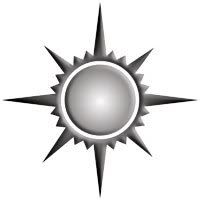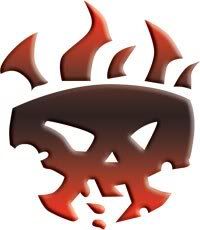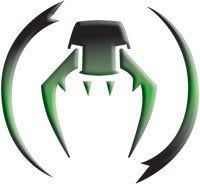Are you a Quiet Speculation member?
If not, now is a perfect time to join up! Our powerful tools, breaking-news analysis, and exclusive Discord channel will make sure you stay up to date and ahead of the curve.
Much like white, black plays a very supportive role in cube by helping to provide redundancy for some themes while providing its own strengths to various archetypes. What are they? Let's take a look.
Strengths:
Black shares a strength with white in that many of its 1 and 2-mana creatures are very solid for aggressive decks. While the two-power creatures at 1 mana all have a drawback they still form a solid foundation for aggressive decks, even if they are "worse" than those found in white (and, arguably, those in green.)
- Carnophage
- Vampire Lacerator
- Sarcomancy
Much like white, black has a strong roster of 2-mana creatures that compare extremely well to white's 2-mana aggressive creatures. Due to the fact that a significant number of them cost 1B, they are easier on mana costs than their BB counterparts. While white's 2-mana creatures typically combine a 2/2 body with a variety of protection abilities and evasion, black's 2-mana creatures offer some more unique and quite powerful abilities.
- Dark Confidant
- Nezumi Graverobber
- Bloodghast
- Nantuko Shade
Black shares another strength with its "reanimator" cards: recursive tools that return creatures from the graveyard onto the battlefield. Due to the ability to "cheat" high-cost cards like Terastodon into play at a premium, reanimator effects are generally better as they become cheaper in cost. No color performs this task better and cheaper than black.
- Reanimate
- Animate Dead
- Recurring Nightmare
Black is also excellent at disrupting opponents through discard and mana disruption. Discard effects can proactively remove problematic threats from an opponent's hand. This is important because something like a turn 4 Wrath of God or Jace, the Mind Sculptor can ruin a black player's day; discard effects can ensure that these cards can't throw a wrench in a black player's plans.
- Liliana's Specter
- Duress
- Hymn to Tourach
- Hypnotic Specter
While black may not have spells like Armageddon and Ravages of War in its arsenal, its mana disruption cards are able to give a black aggressive deck an important means of disrupting an opponent's mana development and strategy.
- Sinkhole
- Braids, Cabal Minion
- Nether Void
Black also has a lot of ways of dealing with opposing creatures. Like white, it has some of the most efficient tools in the game (including a few free ones in Contagion and Snuff Out) including various "edict" effects: cards that make an opponent sacrifice a creature. These are very important tools against creatures with shroud and protection from black.
- Snuff Out
- Go For The Throat
- Shriekmaw
- Consuming Vapors
Black also has some powerful mass removal effects through cards like Damnation, Black Sun's Zenith and Bane of the Living, but for the most part, these effects are weaker than mass removal effects found in white. That said these are still very useful tools for black midrange and control decks, providing redundancy for mass removal effects.
Weaknesses:
Many of black's strongest cards use life as a resource byt trading points of life for a benefit. Some of the more notorious examples being cards like Juzam Djinn (additional power and toughness) and Bitterblossom (additional creatures). While these cards are very useful in black decks, since the benefit gained is worth the life loss, having multiple life loss effects in a deck can be problematic as the life loss effect can quickly add up if there are multiples of these effects in a deck. The "insignificant" drawback on cards like Plague Sliver cumulatively become rather significant, especially against a red player. This weakness can be mitigated through cards like Sword of Light and Shadow and Vampire Nighthawk, but it is still important to keep this in mind.
Black has the strongest weakness to enchantments and artifacts, since the color cannot deal with these permanents on its own and must rely on other colors for assistance. Even blue can counter these threats and can sometimes steal them, but without proper tools, black is helpless against something like an opposing Moat.
Opportunities and Threats - Archetypes:
Orzhov (Black-White) - Aggressive
As was discussed in the white Cube SWOT article, white brings upgrades to black's 1-drop creatures, some powerful spot removal effects, the ability to deal with artifacts and enchantments. Black's creatures like Dark Confidant, Bloodghast, and Hypnotic Specter provide redundancy to white's creatures as they are cheap enough to help to win the game through disruption and sustainable damage.
Black's unique disruption suite is helpful in Orzhov decks. Cheap discard through cards like Duress and Hymn to Tourach can rip an opponent's hand to shreds, removing troublesome cards like Starstorm and Balance from an opponent's hand. Further, disruption through cards like Sinkhole and Braids, Cabal Minion are exceptional since they can keep an opponent from being able to deal with aggressive Orzhov creatures. Since Orzhov decks typically have access to a lot of cheap creature removal, Braids almost always forces an opponent to start sacrifice lands, making it so that the player cannot get to the later stages of the game. Similarly, Sinkhole's cheap mana cost is excellent for Orzhov aggro since the value of such disruption is better at a cheaper mana cost.
Orzhov aggressive decks aim to end the game before a difficult-to-answer creature can enter the battlefield, but black's edict effects can ensure that even a reanimated Sphinx of the Steel Wind doesn't stop an Orzhov aggro deck from winning the game.
Orzhov can also good at midrange strategies since both black and white have similar supportive roles. In these decks, black shifts more towards using its creature removal and mass-removal to ensure a long-term game plan, bringing strong finishers like Grave Titan and Tombstalker to the cause.
Black is able to assist blue by addressing one of blue's weaknesses: its inability to cheaply destroy opposing creatures. Blue's cheapest creature removal is Psionic Blast with much of its removal suite being based on stealing or only temporarily removing creatures. In particular, stealing permanants is an exceptionally powerful ability but most of these cost at least 4 mana. Therefore, it is important for Dimir decks to utilize black's cheap creature removal, through cards like Go For The Throat and Terror, since these spells are able to destroy opposing cheap creatures before they deal a significant amount of damage.
Much like how decks like Azorius are able to utilize more expensive counterspells and card draw effects due to the long-term nature of the deck, Dimir decks are able to utilize more expensive discard engines like Liliana Vess and Nezumi Shortfang, since the deck's aim is to win through a long-term card advantage.
Some Dimir decks are able to circumvent the early and middle stages of the game by reanimating a difficult-to-answer threat, by putting a creature like Myr Battlesphere into the graveyard then into play shortly thereafter. Black reanimation-enabling cards, like Oona's Prowler and Entomb, paired with its reanimating cards, like Reanimate and Animate Dead, are Crucial. This is because, while white and blue do have cards that can reanimate creatures from a grave, the fact that these cost at least five mana means the strategy of "cheating" the creature into play is dependent on black's strong and cheap recursion.
Even in Dimir decks that don't seek to circumvent the mid-to-late game, the ability to re-trigger creatures like Mulldrifter, Vendilion Clique and Grave Titan once they've died is extremely powerful a tool for Dimir decks. Black also brings powerful tutoring through cards like Vampiric Tutor and Liliana Vess. Despite the fact that the card disadvantage is mostly a non-factor with these types of cards, blue is able to mitigate the drawbacks on these cards as blue decks typically have many card draw tools in their decks.
Rakdos (Black-Red) - Aggressive
Black-red aggro is one of the classic archetypes in Magic. Black provides redundancy in the early creature slots since both colors bring pretty good cards at 1-mana, but black's creatures generally outclass red's creatures at 2 mana. These powerful cards allow Rakdos aggressive decks to reach a critical mass of aggression to win the game quickly.
Much like in Orzhov, black's hand and land disruption goes hand-in-hand with the Rakdos strategy. Red's pinpoint land disruption (as opposed to white's mass-land destruction) in cards like Pillage, Molten Rain, and Avalanche Riders are provided redundancy through cards like Sinkhole and Nether Void. It is important, however, to note that the excellent mana disruption in red and some of the best black cards are all at 4 mana, so it is important to not have too many aggressive cards at 4 mana for Rakdos decks.
Black's unique discard can help to deal with troublesome enchantments, a weakness that both black and red share, along with other cards that could ruin your day. Would a Chameleon Colossus ruin your Rakdos victory? Make an opponent discard it with a Thoughtseize!
Golgari (Black-Green) - midrange.
Golgari midrange is what many people immediately think of when they think of midrange strategies, cube being no exception. The archetype is built on grinding out card advantage through a series of 2-for-1s (Cultivate for my 2 lands, my Viridian Shaman's artifact destruction and 2/2 body for your Icy Manipulator) and winning through a dominant board state, typified by large, difficult-to-answer creatures.
Black is able to deal with one of the weaknesses in green: its inability to directly deal with creatures through providing many creature-removal effects. Expensive "edict" effects, like the flashback on Chainer's Edict and Consuming Vapors, are mitigated by the mana acceleration in green and much of the removal suite in black can destroy anything that could hope to destroy a Kodama of the North Tree or a Chameleon Colossus in combat.
Much like in Dimir, black's recursion can help to "cheat" powerful and expensive creatures like Terastodon or Woodfall Primus into play, pairing well with several tools green has available, like Survival of the Fittest and Fauna Shaman, to aid in reanimation strategies.
Also like in Dimir control, having reanimation as a central focus of the deck isn't necessary for the archetype's success but it can definitely help to serve as a powerful sub-theme. This is because Golgari decks naturally tend to have a high amount of mana-ramping effects in the deck to support the archetype's high concentration of cards at the 4-6 mana range, making the themes of reanimation and mana acceleration through cards like Cultivate and Sakura-Tribe Elder complement each other extremely well. These ramp spells help the deck to play expensive black creatures and spells quickly, like Sorin Markov and Ob Nixilis, the latter being exceptional with ramp.
Mono-black - aggressive.
Many mono-black decks are similar to the classic suicide black decks, dealing as much damage to the opponent as possible even at the cost of its own life by demolishing the opponent's hand, manabase, and creatures in play by means of cheap and efficient creatures, discard and land disruption. Fellow Quiet Speculation author Steven Menendian 3-0ed the Cube draft portion of the 2007 Wizards' Invitational via a mono-black strategy, first-picking Dark Confidant over the incredible and broken Time Walk. Artifacts like Molten-Tail Masticore and Cursed Scroll are excellent in this strategy, since they are colorless sources of reach that can destroy creatures with protection from black, planeswalkers, and players.
Looking at black's archetypes, there are 2 aggro archetypes, 1 midrange archetype and 1 control archetype. It is important to support the aggressive Orzhov and Rakdos archetypes through a high amount of aggressive 1-mana and 2-mana creatures and cheap disruption, since these are cards that are key to black-based aggressive archetypes. These cards will help cards like Nether Void and Braids, Cabal Minion to shine.
Black's mass removal and reanimation themes provide support to midrange and control decks, giving redundancy to the tools that make slower decks shine.
I hope that this article has helped you to realize how the colors of good and evil play similarly as well as differently in cube and how that manifests itself in its represented archetypes.
Thank you very much for reading!
Blog: http://idratherbecubing.wordpress.com
Twitter: @UsmanTheRad











IMO, Black's best strength is removal, despite the lack of artifact/enchantment destruction. It has both spot (Go For the Throat, Doom Blade) and mass (Damnation, Black Sun's Zenith) at decent levels of efficiency.
Nice article!